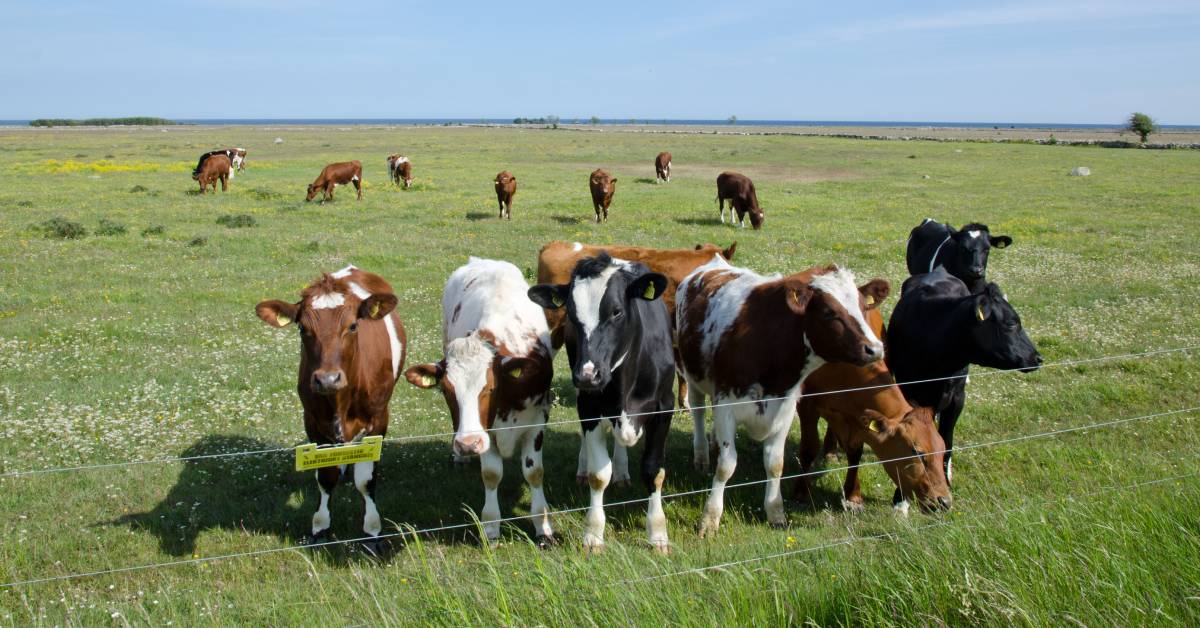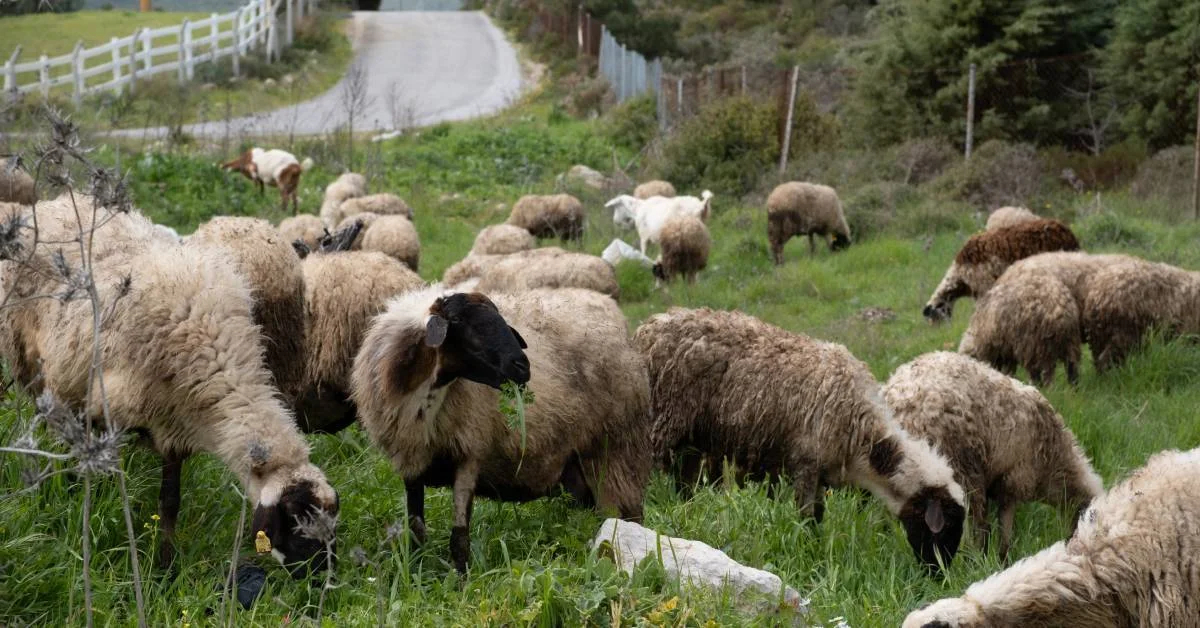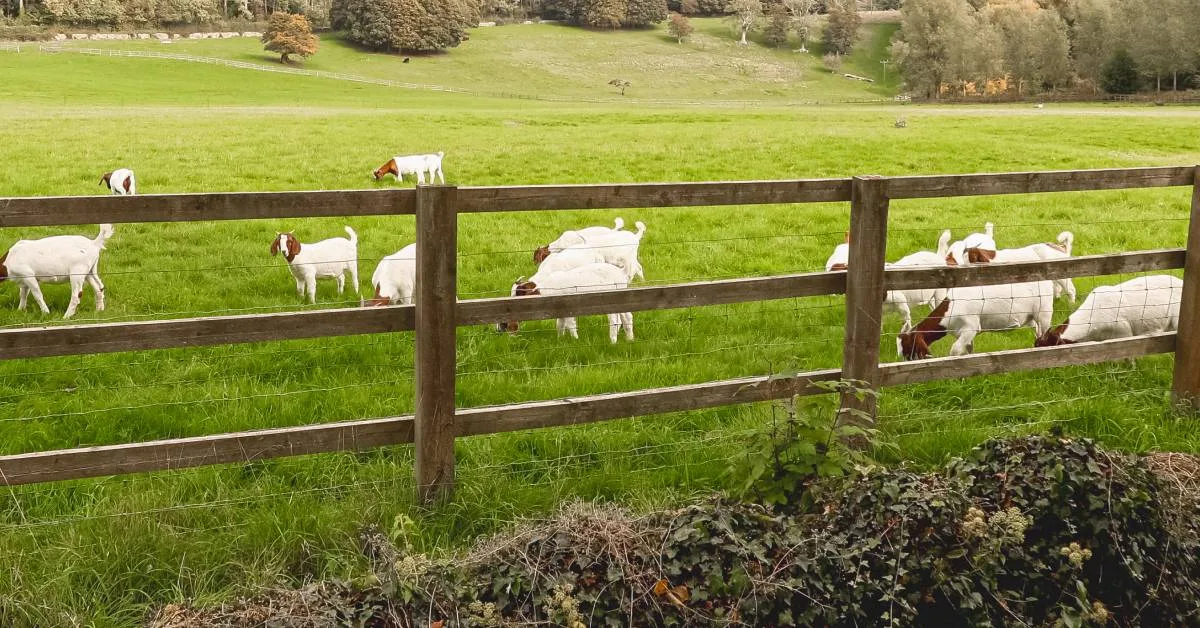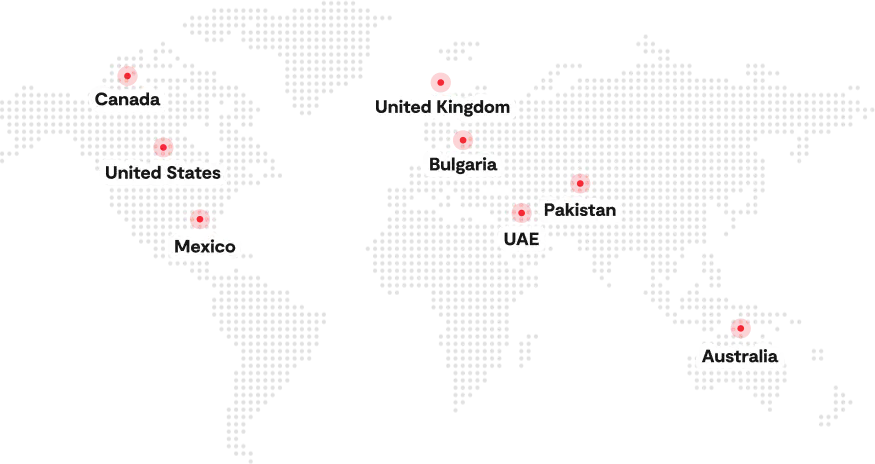Fencing plays a critical role in cattle management, especially in large-scale farms where herd control, grazing allocation, and pasture protection are daily priorities. Traditionally, this has meant installing and maintaining miles of barbed wire, wooden posts, or electric fencing. It is an approach that comes with steep upkeep costs.
According to the research, the average cost of installing physical fencing ranges from $7,000 to $10,000 per mile, excluding routine maintenance and repairs resulting from weather damage, livestock pressure, and general wear and tear.
Virtual fencing for cattle, a GPS-based solution that utilizes wearable collars and mobile technology, is quickly gaining attention as a more adaptable and potentially cost-effective alternative. Unlike traditional options, a virtual fence for cattle significantly reduces material and labor expenses, while offering remote control and flexibility, especially valuable in rotational grazing or adaptive land management.
As farm managers weigh long-term investments, the real question is whether a virtual cattle fence is truly more cost-effective to maintain than traditional fencing. This blog explores the financial, operational, and technological considerations to help you make an informed decision.
Understanding Traditional Fencing for Cattle
Before evaluating the cost-effectiveness of virtual fencing for cattle, it’s important to understand how traditional fencing has shaped cattle management practices for decades. While these physical systems have provided structure and security for herd operations, their financial and environmental drawbacks are becoming harder to ignore, especially in large farms where margins are tight and operational efficiency is crucial.
What is Traditional Fencing?
Traditional fencing refers to physical barriers constructed to restrict the movement of livestock within defined boundaries. These fences are typically made using materials such as barbed wire, high-tensile electric wire, woven mesh, or wooden posts, each selected based on the land conditions, herd size, and management style.
- Barbed wire is one of the most common options, favored for its low cost but often criticized for the risks it poses to animals.
- Electric fences use intermittent electrical pulses to keep cattle within boundaries, requiring consistent energy input and regular monitoring.
- Woven wire fencing offers higher security but is more expensive and more complicated to install on uneven terrain.
- Wooden fences, although durable and highly visible, are rarely used in commercial operations due to the high costs of lumber and maintenance.
These systems are prevalent in high-density farms, where precise containment is necessary to manage herd movement, minimize the risk of escapes, and comply with local zoning and animal welfare regulations.
The Costs and Maintenance of Traditional Fencing
While traditional fencing offers proven containment, it often comes at a substantial long-term cost, financially and operationally.
- Initial setup expenses can be considerable. For example, installing woven wire fencing with treated wooden posts can cost between $ 9,000 and $ 12,000 per mile in some regions, depending on various factors such as terrain and labor requirements. These figures cover materials, equipment rentals, and labor, all of which scale significantly with larger cattle farms.
- Maintenance costs are ongoing and rarely predictable. Regular repairs are necessary for weather-related damage, such as sagging from snow or breakage from windstorms, as well as wear from livestock rubbing, pushing, or stepping on fence lines. These repairs often require skilled labor or the services of outside contractors, particularly when electrical systems are involved.
- There’s also the environmental impact to consider. Fixed fencing can impede wildlife migration, disrupt natural grazing patterns, and limit land use flexibility. In rotational grazing systems, traditional fences can restrict the ability to move herds efficiently, which affects pasture regrowth and long-term soil health.
For ranchers balancing productivity, animal welfare, and regulatory compliance, these hidden costs raise essential questions about long-term sustainability. It’s in this context that virtual fencing for cattle emerges as a potential alternative worth serious consideration.
Advantages of Traditional Fencing for Cattle
While virtual fencing for cattle is gaining momentum due to its flexibility and digital control, traditional fencing methods continue to offer proven benefits that modern systems can’t fully replicate, especially in specific operational contexts.
For farm managers working in remote regions, dealing with high-risk livestock, or managing diverse species, physical fences remain a reliable cornerstone of pasture management.
Below are four key advantages that explain why traditional fencing is still a strategic choice for many agricultural professionals.
1. Independence from Power and Connectivity
Traditional fencing requires no reliance on cellular networks, GPS satellites, or battery power. In remote or mountainous regions with weak or unreliable signal coverage, physical fences offer a fail-safe method of containment. This reliability makes them particularly valuable during weather disruptions or power outages.
2. Visual and Physical Barrier for Herd Behavior
Cattle respond instinctively to physical boundaries. A visible and tangible fence acts as both a psychological deterrent and a physical barrier, which is especially useful for newly acquired animals or herds unfamiliar with virtual systems. This reduces the risk of escape and minimizes training time.
3. Durability and Long-Term Asset Value
High-quality barbed wire or electric fencing can last for decades with routine maintenance. Once installed, traditional fencing becomes a long-term asset, especially on owned land with established grazing patterns. It also adds to property value and can serve multiple livestock species without modification.
4. No Requirement for Animal-Based Devices
Unlike virtual fencing systems, traditional methods don’t require collars, sensors, or wearable tech on each animal. This eliminates concerns over collar loss, device failure, or the need for ongoing hardware investments, reducing both initial capital and ongoing maintenance complexity.
Understanding Virtual Fencing for Cattle
As cattle operations scale and land-use flexibility becomes more valuable, many ranchers are reconsidering the limitations of fixed, physical fencing systems. This shift has led to growing interest in virtual fencing for cattle, a technology-driven solution that provides dynamic, invisible containment without the need for permanent structures.
Unlike traditional methods, virtual fencing adapts to both cattle movement and pasture management strategies, allowing producers to exert more control over grazing patterns and land utilization.
What is Virtual Fencing?
Virtual fencing is a digital containment method that uses GPS technology, IoT sensors, and wearable collar devices to create adjustable, invisible boundaries for livestock. Rather than relying on wood, wire, or electric barriers, cattle are guided using auditory cues and mild stimuli delivered through the collar when they approach predefined zones.
Each collar is GPS-enabled and connected to a centralized system that tracks the animal’s location in real time. When a cow nears the digital fence line, it first hears a warning sound. If it continues to cross the boundary, a low-level electrical pulse is administered. Over time, cattle learn to respond to the auditory cue alone, reducing the need for physical correction.
The technology provides automatic containment without obstructing the land, enabling greater flexibility in rotational grazing, land conservation, and herd movement, all without the need to install a single post or wire.
According to a recent study, virtual fencing showed effectiveness in managing herd behavior within the first two weeks of deployment, significantly reducing the risk of breakouts and pasture overuse.
The Technology Behind Virtual Fencing
Rather than focusing solely on the hardware, the real power of a virtual cattle fence lies in how its components interact as part of a broader data-driven ecosystem. Beyond GPS collars and network connectivity, what distinguishes virtual fencing is its ability to convert location and behavioral data into actionable insights.
Modern systems collect more than just movement—they log grazing duration, response to stimuli, pacing behaviors, and even stress indicators through motion analytics. This data feeds into software dashboards that help producers identify trends, adjust grazing strategies, and assess animal welfare over time.
Many systems also offer performance analytics, alert systems, and historical reports to aid decision-making. Unlike static fencing, which requires manual intervention for pasture rotation, virtual fencing enables remote boundary adjustments within minutes, making it ideal for adapting to seasonal shifts or sudden weather changes.
Global tech providers like Nofence and Vence are already scaling the technology, and real-world deployments show significant reductions in operational labor and fencing material costs over time.
Advantages of Virtual Fencing for Cattle
As more operators explore alternatives to traditional infrastructure-heavy systems, virtual fencing for cattle presents multiple operational and ecological advantages. Beyond eliminating physical barriers, this technology introduces new ways to manage land use, animal behavior, and labor input with precision and efficiency.
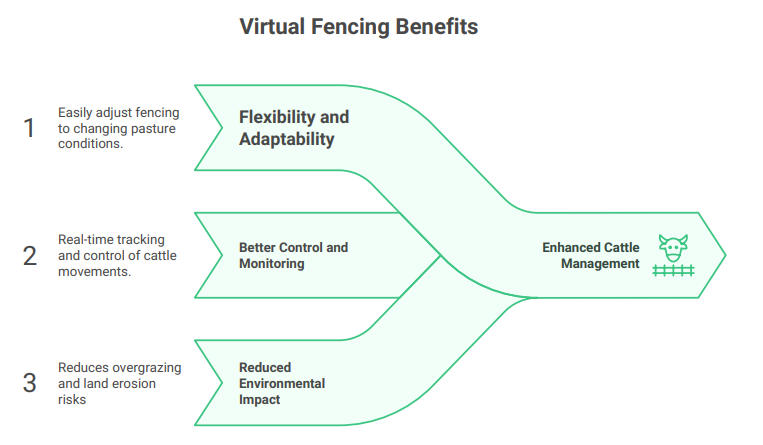
1. Flexibility and Adaptability
One of the most valuable advantages of a virtual cattle fence lies in its adaptability to varied landscapes and rotational grazing systems. Unlike traditional fencing, boundary lines can be set or adjusted digitally using software or mobile applications, often within minutes.
This functionality is handy for operations practicing adaptive grazing, where land access needs to shift frequently in response to changes in forage availability and soil regeneration cycles.
Virtual fencing for cattle plays a critical role in pasture-based systems that aim to improve range utilization, control overgrazing, and support regenerative practices. For producers raising beef cattle and managing grazing, understanding the role of virtual fencing within the broader operation is essential.
2. Better Control and Monitoring
Beyond basic location tracking, virtual fencing systems offer actionable behavioral insights that traditional fencing systems simply can’t provide. By analyzing movement patterns through computer vision technology, rest periods, and boundary interactions, producers can detect early signs of stress, illness, or unusual activity in specific animals. This data can be critical for making proactive health and grazing decisions.
Some platforms even allow historical playback of herd movements over days or weeks, helping managers evaluate grazing pressure on specific paddocks or track how environmental changes affect cattle behavior. These insights transform daily cattle management into a more informed and data-driven process, rather than just a logistical one.
3. Reduced Environmental Impact
Traditional fencing systems often disturb soil structure, restrict wildlife corridors, and contribute to landscape fragmentation. In contrast, virtual fencing for cattle operates without altering the physical environment. This allows for uninterrupted movement of native wildlife, reduces mechanical disruption during setup or repairs, and helps preserve natural hydrology by not blocking water paths or creating erosion channels.
The absence of permanent materials, such as treated wood and galvanized steel, also lowers the overall carbon footprint. As regulatory bodies tighten environmental standards, adopting a virtual fence for cattle can position operations to meet conservation compliance benchmarks without requiring large-scale infrastructure changes.
Comparing Costs – Traditional Fencing vs. Virtual Fencing for Cattle
When deciding between physical fencing and a virtual fence for cattle, cost is a critical factor. While traditional fencing may appear straightforward, the long-term expenses, especially in rotational grazing systems, can accumulate quickly. On the other hand, virtual fencing for cattle requires a different type of investment: one rooted in precision agriculture technology rather than lumber, wire, and workforce.
Below is a detailed comparison of cost components, based on current industry data and real-world implementations:
| Cost Category | Traditional Fencing | Virtual Fencing for Cattle |
| Initial Setup Costs | Requires physical materials (wire, posts), machinery, and labor. Averages $7,000–$10,000 per mile. | GPS collars cost ~$250–$300 each. No materials or manual installation needed. Includes software setup. |
| Maintenance Costs | Ongoing repairs from weather, livestock damage, and vegetation clearing. $1,000+ per mile annually. | Minimal upkeep. Battery replacement and software updates. Under $50 per collar per year. |
| Labor & Operational Costs | Requires routine inspections and physical adjustments. Labor-intensive, especially with large herds. | Boundaries updated digitally. Remote tracking reduces the need for field visits and manual effort. |
Challenges and Limitations of Virtual Fencing
While virtual fencing for cattle brings measurable benefits, adopting it at a commercial scale is not without hurdles. Understanding the operational, financial, and technical constraints is essential before replacing traditional barriers.
Below challenges vary across environments, budgets, and herd sizes and should be carefully considered by managers evaluating their options:
1. Technology Limitations and Connectivity Issues
A virtual fence for cattle relies heavily on GPS accuracy and uninterrupted wireless connectivity. In remote or mountainous areas with feedlots, weak cellular coverage can delay signal transmission, leading to boundary inaccuracies or delayed feedback. System malfunctions or collar battery failures, especially during peak operation, can disrupt cattle containment.
2. Training and Adaptation
Introducing virtual fencing for cattle requires a learning phase for both livestock and handlers. Operators must be trained to program boundaries, interpret data, and monitor animal responses.
Meanwhile, cattle require time to associate auditory cues with invisible limits, often taking several days to adjust. Adaptation periods vary based on herd temperament and handling history, making uniform results difficult to guarantee without structured onboarding and follow-up observation.
3. Cost and Maintenance Burden
Virtual cattle fence systems demand a considerable upfront investment, especially when deployed across large-scale feedlots. Collars can cost hundreds of dollars per animal, and subscription-based software adds recurring costs.
While labor savings may balance expenses over time, additional maintenance, such as replacing broken collars or updating firmware, adds complexity to daily routines.
These cumulative costs can pose a significant barrier for smaller farms or operations that manage thin margins. Evaluating ROI against traditional fencing remains a practical necessity before full-scale adoption is made.
4. Limited Multi-System Integration
Some virtual fencing providers offer platforms that are not compatible with existing cattle management software. This lack of integration can force operators to maintain separate data systems for tracking movement, feed intake, and veterinary records.
The resulting inefficiencies may lead to data silos or manual duplication of tasks. Until cross-platform compatibility becomes standard, feedlot managers must consider the operational friction involved in managing separate systems for fencing and overall livestock performance tracking.
Conclusion
Virtual fencing for cattle is redefining how ranchers manage movement, welfare, and labor across large herds. However, its actual value emerges when paired with an integrated software system that keeps every aspect ofoperations, from health records to pen assignment, connected and traceable.
Folio3 AgTech Feedlot Management Software helps farm managers with real-time data, automation, and actionable insights to ensure virtual fencing systems run efficiently, even at scale. If you’re looking to bridge technology with hands-on feedlot operations, we offer a purpose-built solution designed with beef professionals in mind.
FAQs
What Is Virtual Fencing For Cattle, and How Does It Work?
Virtual fencing utilizes GPS-enabled collars to contain and guide cattle within predefined boundaries, using audio cues or mild pulses to eliminate the need for physical fences.
Is Virtual Fencing More Cost-Effective Than Traditional Fencing?
Over time, yes. While initial collar investments can be high, they reduce maintenance, labor, and fencing material costs, especially in rotational or regenerative grazing systems.
Can Virtual Fencing Work In Remote Areas With Poor Connectivity?
It can, but performance may vary. Systems that store data locally or offer satellite communication work better in areas with weak cellular signals.
How Can Foli3 Software Help In Managing Cattle With Virtual Fencing?
Folio3 feedlot management software integrates cattle movement data with health, feeding, and task records, enabling easier management of alerts, tracking of trends, and maintaining complete operational control across the feedlot.

